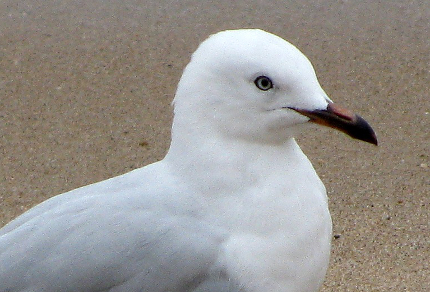As restless as the wild east wind that whipped palm fronds and splashed waves onto the sand of Rowe’s Bay, I prowled the beach and neighbouring Esplanade in search of birds, in search of a few hours of escape from cement walls and security-screened windows and doors. Perhaps it was also the unexpected, warm humidity in the air I sought to escape, knowing full well that Townsville’s sauna-like summer looms ahead, beyond the relatively cool respite of winter and the dry tropics spring. Then, as on our arrival, our outdoor excursions will be limited to the earliest hours of light and evening’s promise of dusk. Again, we’ll desire only to escape the sun.
As though agitated by the wind and unsettled weather, mynas, figbirds, great bowerbirds, and rainbow lorikeets flew swiftly from tree to tree amid loud avian exclamations. They, like me, seemed restless. Silver gulls epitomizing seabird elegance stood motionless at the ocean’s edge or rested on the sand beneath a dull, brooding sky. These dainty gulls are the most widespread of Australian gulls, with their range encompassing the entire country.1 With their red legs and beaks and white eyes and heads, they are easily distinguished from all other Australian gulls. Their breeding season of August through December1 is fast approaching, so in future months I must walk and observe carefully.
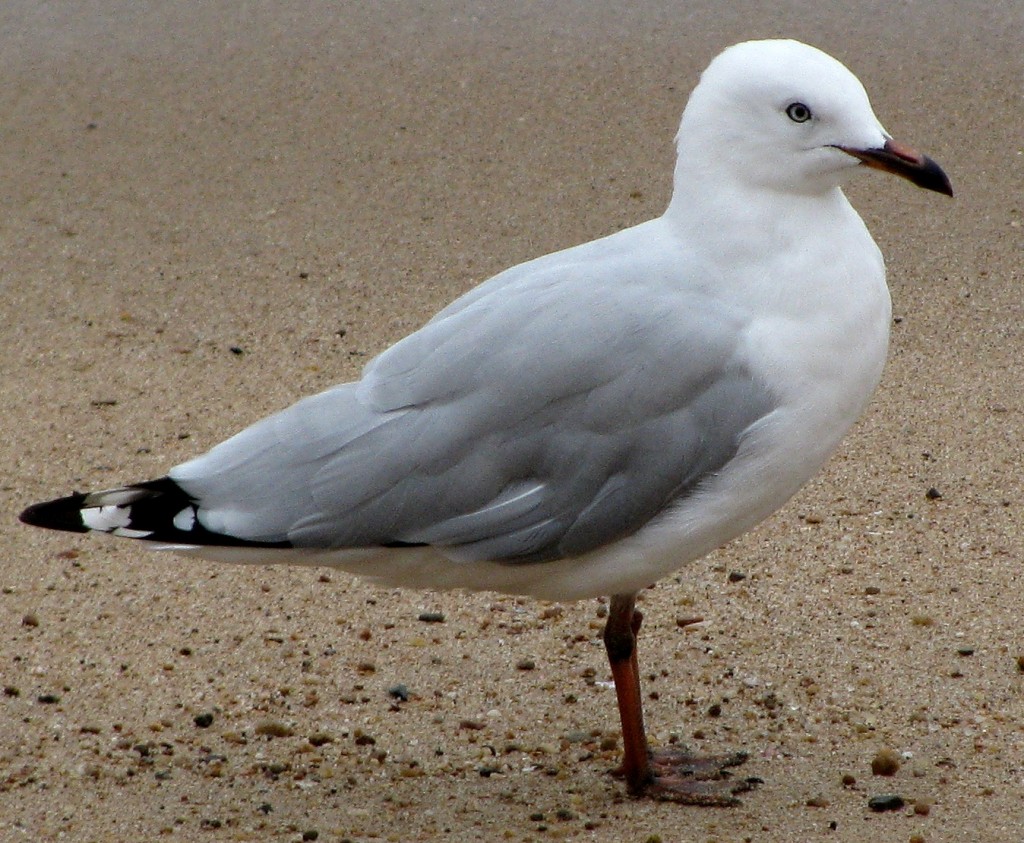
Silver Gull (© Magi Nams)
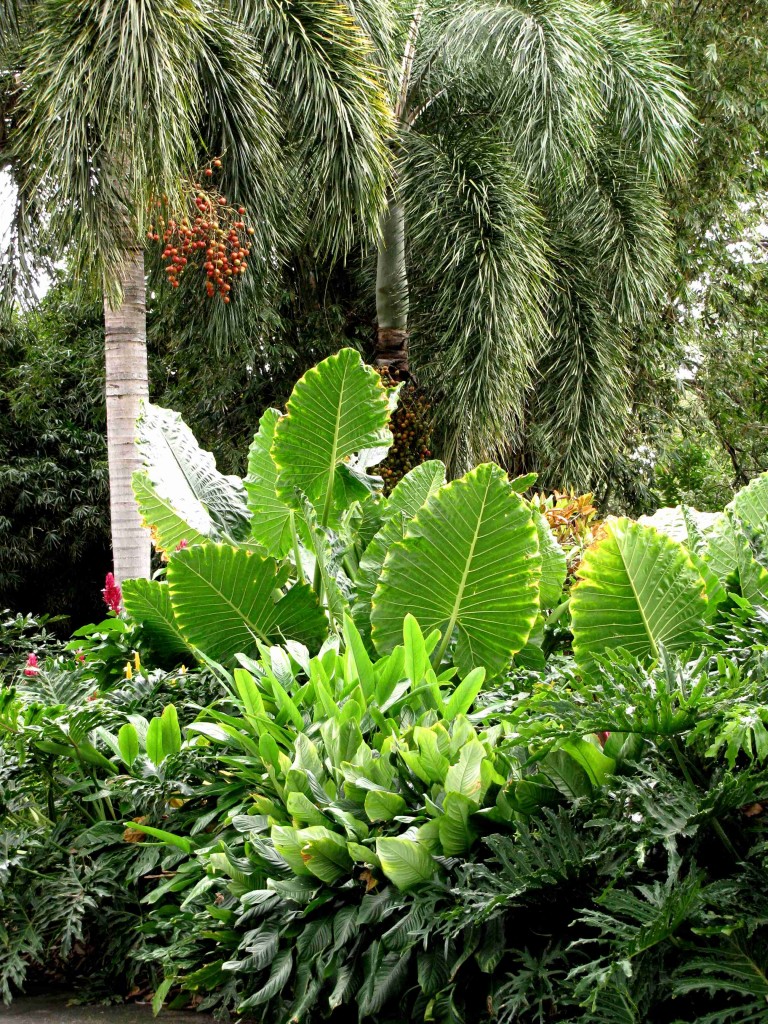
Queens Gardens (© Magi Nams)
I left the beach to seek the ordered beauty of Queens Gardens, which neither Vilis nor I had visited since January 2, three days after we arrived in Australia (see http://maginams.ca//2010/01/02/ ). The profusion of lush growth, with its rich shapes and brightly-hued foliage, that so startled and enthralled us nearly seven months ago seemed comfortably familiar today. Tall trees possessing massive branches towered above beautifully precise plantings bordering the Palm Lawn and over thick, dark understory groupings in the rainforest section.
I looked for owls in those splendid trees, but spotted none. The entire gardens seemed inordinately silent except for the chatterings of figbirds feeding on fig berries and inadvertently knocking some to the ground around me. Yet, exquisite butterflies flew in the silence – a male Cairns birdwing with emerald and black wings, and a Ulysses swallowtail with wings of shocking blue edged with velvet black. They flew too high for me to photograph them, instead leading me on with glimpses of lepidopteran beauty unlike any I have ever seen in North America. This city, with its climate that belts you with scorching heat, swamping humidity, and torrential rains, harbours great beauty.
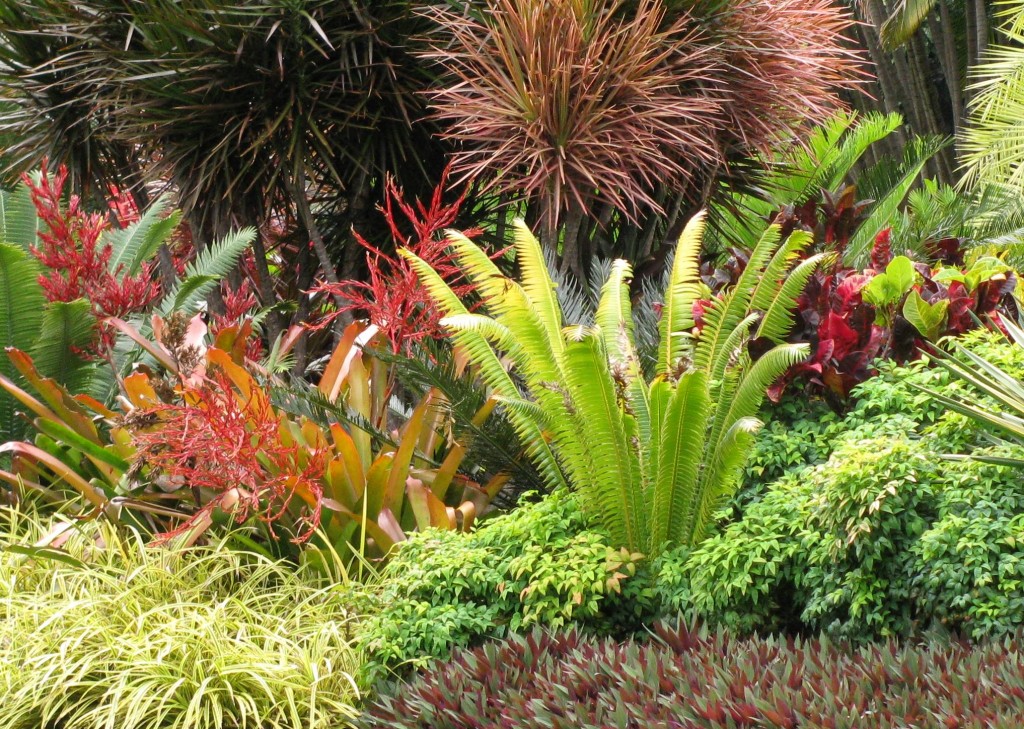
Lush Foliage Plants in Queens Gardens (© Magi Nams)
Today’s birds: masked lapwings, mynas, great bowerbirds, rainbow lorikeets, figbirds, Australian white ibises, peaceful doves, magpie-larks, silver gulls, crested tern, little corella, sulphur-crested cockatoos, sacred kingfisher, bush stone-curlew, house sparrows, black-faced cuckoo-shrike, Australian magpies, black kites, nutmeg mannikins, brown honeyeaters, rock dove, blue-faced honeyeaters, white-gaped honeyeater. Also, Cairns birdwing and Ulysses swallowtail.
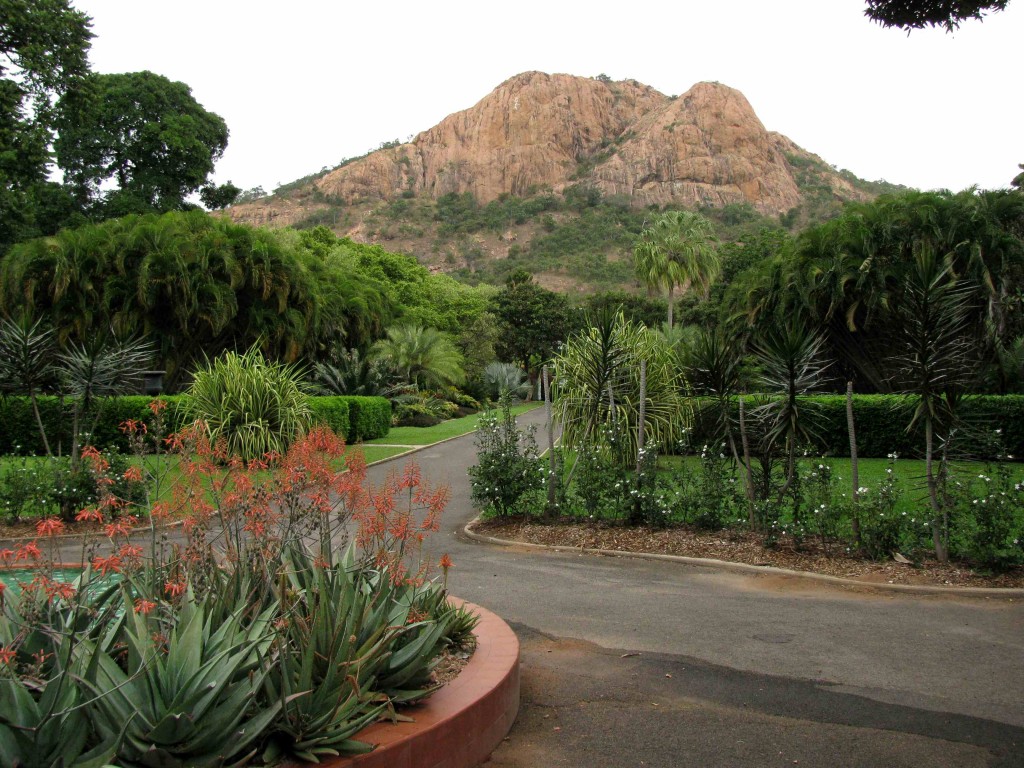
North Face of Castle Hill seen from Queens Gardens (© Magi Nams)
Reference:
1. Graham Pizzey and Frank Knight. The Field Guide to the Birds of Australia. 1997. Angus & Robertson, Sydney. p. 224.

